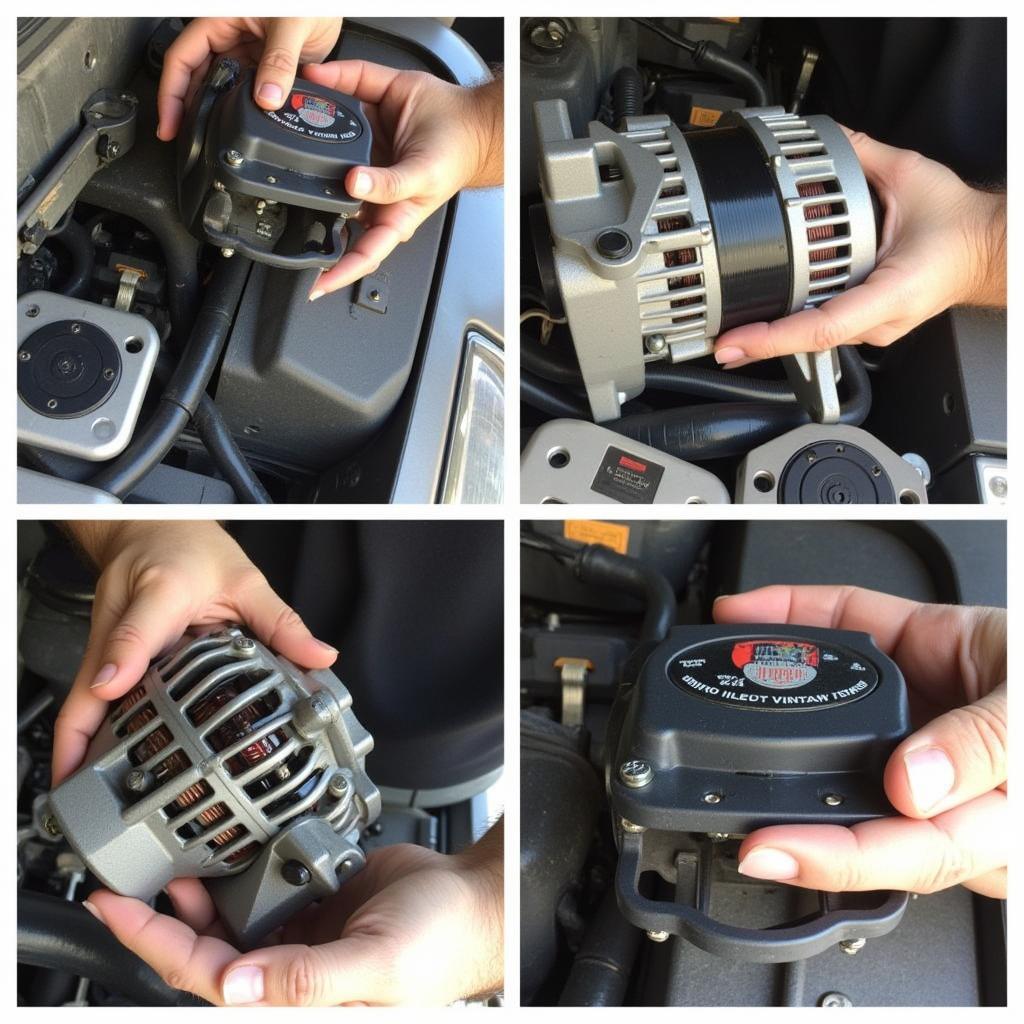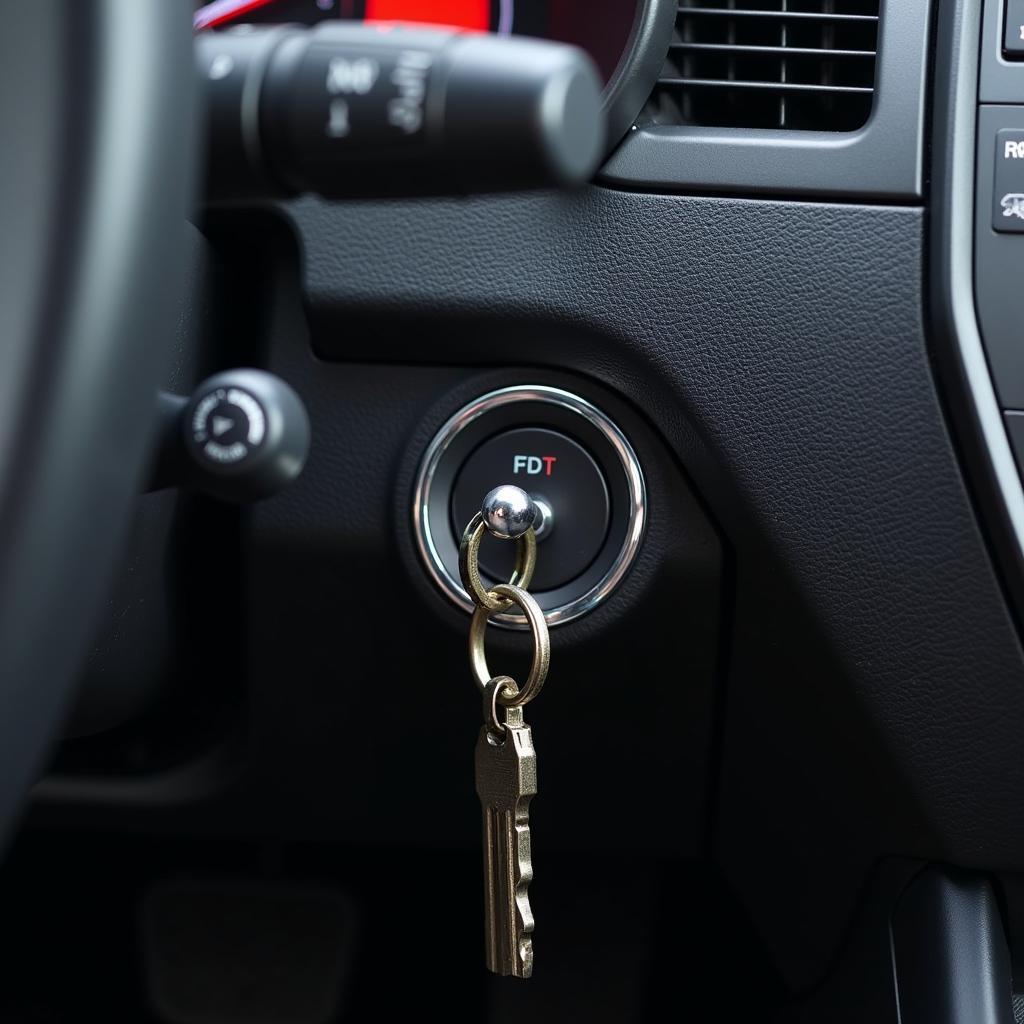A Land Rover charging system fault can quickly turn your luxurious ride into a frustrating experience. From a dim dashboard to a complete engine stall, a malfunctioning charging system can manifest in various ways. This comprehensive guide delves into the intricacies of Land Rover charging system faults, providing you with the knowledge and tools to diagnose and potentially resolve the issue.
Understanding the Land Rover Charging System
The charging system in your Land Rover is responsible for powering all electrical components while the engine is running and recharging the battery after starting. It’s a complex network consisting of key components working in harmony: the alternator, battery, voltage regulator, and various sensors and wiring. A fault in any of these components can trigger a “Land Rover charging system fault” warning and lead to drivability issues.
Common Symptoms of a Land Rover Charging System Fault
Identifying a charging system problem early can save you from being stranded. Here are some common signs to watch out for:
- Dim or flickering headlights: A weakening alternator may struggle to provide sufficient power, leading to dim lights.
- Warning lights on the dashboard: The battery light, charging system warning light, or check engine light might illuminate.
- Slow engine cranking: A low battery charge due to a faulty charging system can result in sluggish engine starting.
- Clicking sound when turning the key: This often indicates a depleted battery unable to crank the engine, potentially caused by a charging system failure.
- Electrical accessories malfunctioning: Problems with power windows, radio, or other electrical components can point towards a charging system issue.
Diagnosing a Land Rover Charging System Fault
Pinpointing the exact cause of a charging system fault requires systematic diagnosis. Here’s a step-by-step guide to help you:
- Visual inspection: Check the battery terminals for corrosion, loose connections, or damage. Inspect the alternator belt for wear and tear or slippage.
- Battery test: Use a multimeter to measure the battery voltage. A healthy battery should read around 12.6 volts with the engine off.
- Alternator test: With the engine running, the voltage across the battery terminals should increase to around 14-14.5 volts, indicating the alternator is charging.
- Voltage regulator test: A faulty voltage regulator can overcharge or undercharge the battery. Testing this component often requires specialized equipment.
Common Causes of Land Rover Charging System Faults
Several factors can contribute to a charging system malfunction:
- Faulty alternator: The alternator is the heart of the charging system, and its failure is a common culprit.
- Weak or dead battery: A failing battery might not hold a charge, placing extra strain on the alternator and eventually leading to charging system problems.
- Damaged voltage regulator: This component regulates the voltage output of the alternator. A malfunctioning regulator can overcharge or undercharge the battery.
- Wiring issues: Corroded or damaged wiring can disrupt the flow of current, affecting the charging system.
- Serpentine belt problems: A worn or broken serpentine belt can prevent the alternator from spinning and generating electricity.
What if the problem persists after basic troubleshooting?
If you’ve tried these steps and are still experiencing issues, it’s time to seek professional help. Modern Land Rovers have complex electrical systems that require specialized diagnostic tools and expertise.
“Don’t underestimate the importance of a properly functioning charging system,” advises John Stevenson, a seasoned Land Rover technician with over 20 years of experience. “Ignoring a charging system fault can lead to costly repairs down the road, especially with the sophisticated electronics found in modern Land Rovers.”
 Land Rover Alternator Replacement
Land Rover Alternator Replacement
Land Rover Charging System Fault: Remote Diagnostics and Software Solutions
Remote diagnostics and software solutions are becoming increasingly important in the automotive world, especially for complex vehicles like Land Rovers. These technologies allow technicians to access your vehicle’s systems remotely, diagnose faults, and even perform software updates or programming to address certain issues, sometimes eliminating the need for a physical visit to a workshop. This is particularly useful for addressing charging system faults related to software glitches or sensor malfunctions.
“Remote diagnostics can often identify the root cause of a charging system issue much faster than traditional methods,” says Emily Carter, a software engineer specializing in automotive diagnostics. “This saves time and money for the owner, and allows for quicker repairs.”
Conclusion
A Land Rover charging system fault can be a nuisance, but with a methodical approach to diagnosis, you can often identify the problem. Regular maintenance, including battery and alternator checks, can prevent many charging system issues. If the problem persists after basic troubleshooting, don’t hesitate to seek professional help from a qualified Land Rover technician. Addressing the issue promptly will ensure your Land Rover remains a reliable and enjoyable driving experience.
FAQ
- How much does it cost to fix a Land Rover charging system fault? The cost varies depending on the specific component that needs to be replaced and the labor rates in your area.
- Can I drive my Land Rover with a charging system fault? It’s not recommended. Continuing to drive with a faulty charging system can lead to further damage and potentially leave you stranded.
- How often should I check my Land Rover’s charging system? It’s a good idea to have your charging system checked as part of your regular maintenance schedule, typically every year or 10,000-15,000 miles.
- What is the most common cause of a Land Rover charging system fault? A faulty alternator is often the primary culprit.
- Can a bad battery cause a charging system fault? Yes, a weak or dead battery can put extra strain on the alternator and other components, leading to a charging system malfunction.
- How long does it take to replace a Land Rover alternator? The replacement time depends on the specific model and the mechanic’s experience, but it typically takes a few hours.
- Can a software update fix a Land Rover charging system fault? In some cases, yes. Software glitches or sensor malfunctions can sometimes be addressed through software updates.


